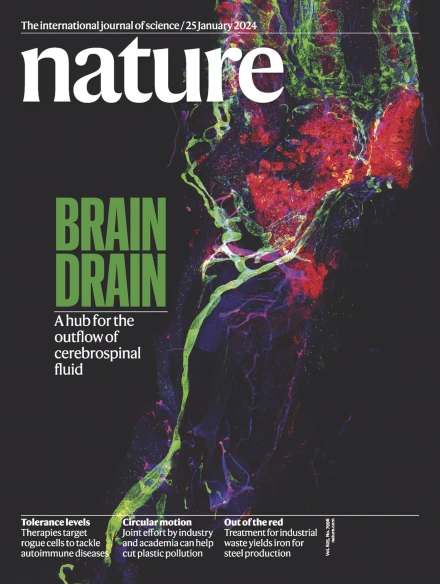High continuity of forager ancestry in the Neolithic period of the eastern Maghreb
IF 48.5
1区 综合性期刊
Q1 MULTIDISCIPLINARY SCIENCES
引用次数: 0
Abstract
Ancient DNA from the Mediterranean region has revealed long-range connections and population transformations associated with the spread of food-producing economies1–6. However, in contrast to Europe, genetic data from this key transition in northern Africa are limited, and have only been available from the far western Maghreb (Morocco)1–3. Here we present genome-wide data for nine individuals from the Later Stone Age through the Neolithic period from Algeria and Tunisia. The earliest individuals cluster with pre-Neolithic people of the western Maghreb (around 15,000–7,600 years before present (bp)), showing that this ‘Maghrebi’ ancestry profile had a substantial geographic and temporal extent. At least one individual from Djebba (Tunisia), dating to around 8,000 years bp, harboured ancestry from European hunter–gatherers, probably reflecting movement in the Early Holocene across the Strait of Sicily. Later Neolithic people from the eastern Maghreb retained largely local forager ancestry, together with smaller contributions from European farmers (by around 7,000 years bp) and Levantine groups (by around 6,800 years bp), and were thus far less impacted by external gene flow than were populations in other parts of the Neolithic Mediterranean. Ancient DNA from the eastern Maghreb (Tunisia and Algeria) dating between 15,000 and 6,000 years ago shows that this region was far less affected by external gene flow than the rest of the Neolithic Mediterranean, including not only Europe but also the western Maghreb (Morocco).


东马格里布地区新石器时代觅食祖先的高度连续性
来自地中海地区的古代DNA揭示了与粮食生产经济传播相关的长期联系和人口转变1,2,3,4,5,6。然而,与欧洲相比,来自北非这一关键转变的遗传数据是有限的,并且只能从遥远的西部马格里布(摩洛哥)获得。在这里,我们展示了来自阿尔及利亚和突尼斯的从石器时代晚期到新石器时代的9个人的全基因组数据。最早的个体与西部马格里布的前新石器时代的人(距今约15,000-7,600年)聚集在一起,表明这种“马格里布”祖先剖面具有相当大的地理和时间范围。至少有一个来自Djebba(突尼斯)的个体,可以追溯到大约8000年前,拥有欧洲狩猎采集者的祖先,可能反映了全新世早期西西里岛海峡的运动。来自东马格里布的新石器时代晚期的人大部分保留了当地的觅食祖先,加上欧洲农民(大约7000年前)和黎万特人(大约6800年前)的贡献,因此受外部基因流动的影响远小于新石器时代地中海其他地区的人群。
本文章由计算机程序翻译,如有差异,请以英文原文为准。
求助全文
约1分钟内获得全文
求助全文
来源期刊

Nature
综合性期刊-综合性期刊
CiteScore
90.00
自引率
1.20%
发文量
3652
审稿时长
3 months
期刊介绍:
Nature is a prestigious international journal that publishes peer-reviewed research in various scientific and technological fields. The selection of articles is based on criteria such as originality, importance, interdisciplinary relevance, timeliness, accessibility, elegance, and surprising conclusions. In addition to showcasing significant scientific advances, Nature delivers rapid, authoritative, insightful news, and interpretation of current and upcoming trends impacting science, scientists, and the broader public. The journal serves a dual purpose: firstly, to promptly share noteworthy scientific advances and foster discussions among scientists, and secondly, to ensure the swift dissemination of scientific results globally, emphasizing their significance for knowledge, culture, and daily life.
 求助内容:
求助内容: 应助结果提醒方式:
应助结果提醒方式:


